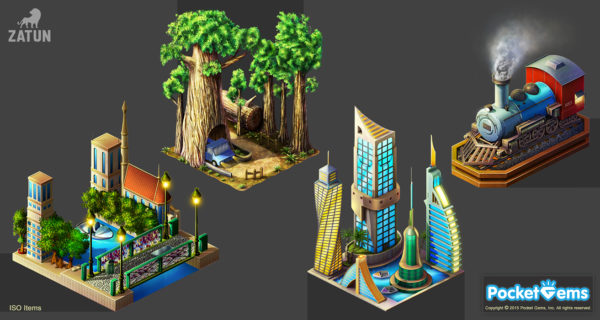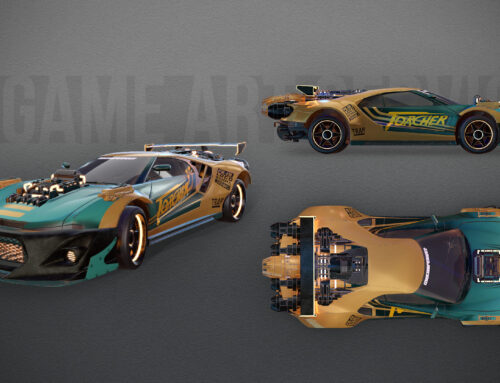Using Isometric Art In Game Design
Video games, computer games, console games and mobile games come in variety of designs; previous generation games used to be designed using 2D techniques, while modern games go for the more realistic 3D approach.
However, it may be very expensive (in terms of design cost, as well as the system resources required to run the game) to design a game in true 3D. Some games don’t even need them, some games can’t run in simple devices if designed in a true 3D manner; yet, gamers prefer having a 3D environment to have a complete experience.
Isometric Art
What is this Isometric art?
Basically, it is a combination of drop-down art in 2 point perspective. Earlier it was mostly used for RPG games only. But, after Zygna game services revolutionized the industry, isometric art came to be used even for casual games; a most popular example for use of isometric art is the super hit game Farmville.
Imagine there is a ball on the ground; if we draw it in a 2D style, it will show as a circle; the same ball drawn in a 3D style will show a sphere (which is the actual shape of the ball).
In real life, what do you see: a circle or a sphere?
That depends on your viewpoint. If you are seeing it in a straight line from your eyes, you see a circle only. If the same view is seen from a slightly elevated angle, a tilted viewpoint, you can see the whole sphere.
While the circle is a 2D shape and the sphere is a 3D shape, isometric art tries to draw a line in between, creating a pseudo-3D view.
Imagine a simple brick game where bricks are falling from the top. In a 2D brick game, you don’t actually see bricks, they are all rectangles only. Even the simplest phone can display these rectangles because the memory requirement for such a game is very less.
If you have a smartphone playing the same game, you see actual 3D bricks falling. They need higher memory and processing power and can provide a wonderful game experience.
Imagine the same 2D brick game in the same basic phone, but seen from a tilted angle; means, you are standing above in terrace watching the bricks fall from somewhere. Now you can see slightly more than the rectangles; it may not be true 3D, but it does look like actual bricks falling.
This type of artwork is called isometric art. They don’t require typical 3D design tools to draw; even the gamer don’t need high power rendering processors; they just get the feel of 3D in a 2D setup.
Isometric art can be in 2D, 3D, or pre-rendered 3D or vector. It all depends on game requirements and isometric art has to follow a particular style based on that: casual, realistic, or stylized.
Creating Isometric Drawings
Designers can create isometric drawings using tools similar to 2D design tools. The only difference will be, they make them in a tilted viewpoint. Game designer Clint Bellanger defines this as, ‘swing the camera 45 degrees to one side, and then 30 degrees down.’
This means a rectangle in 2D design will show as a diamond in isometric drawings. A cube, which was represented as a rectangle in a 2D world, will now appear to have at least three sides!
Advantages Of Isometric Art
The biggest advantage of isometric art is that we can make them really fast (when compared to a pure 3D design) and easy. They can be played in more basic devices that may not have 3D rendering capabilities.
If you are outsourcing your 3D modeling services to experts, isometric drawings will give you a feel of how they might look like. This helps in fine-tuning character models before handing them over to the 3D modeling team.





